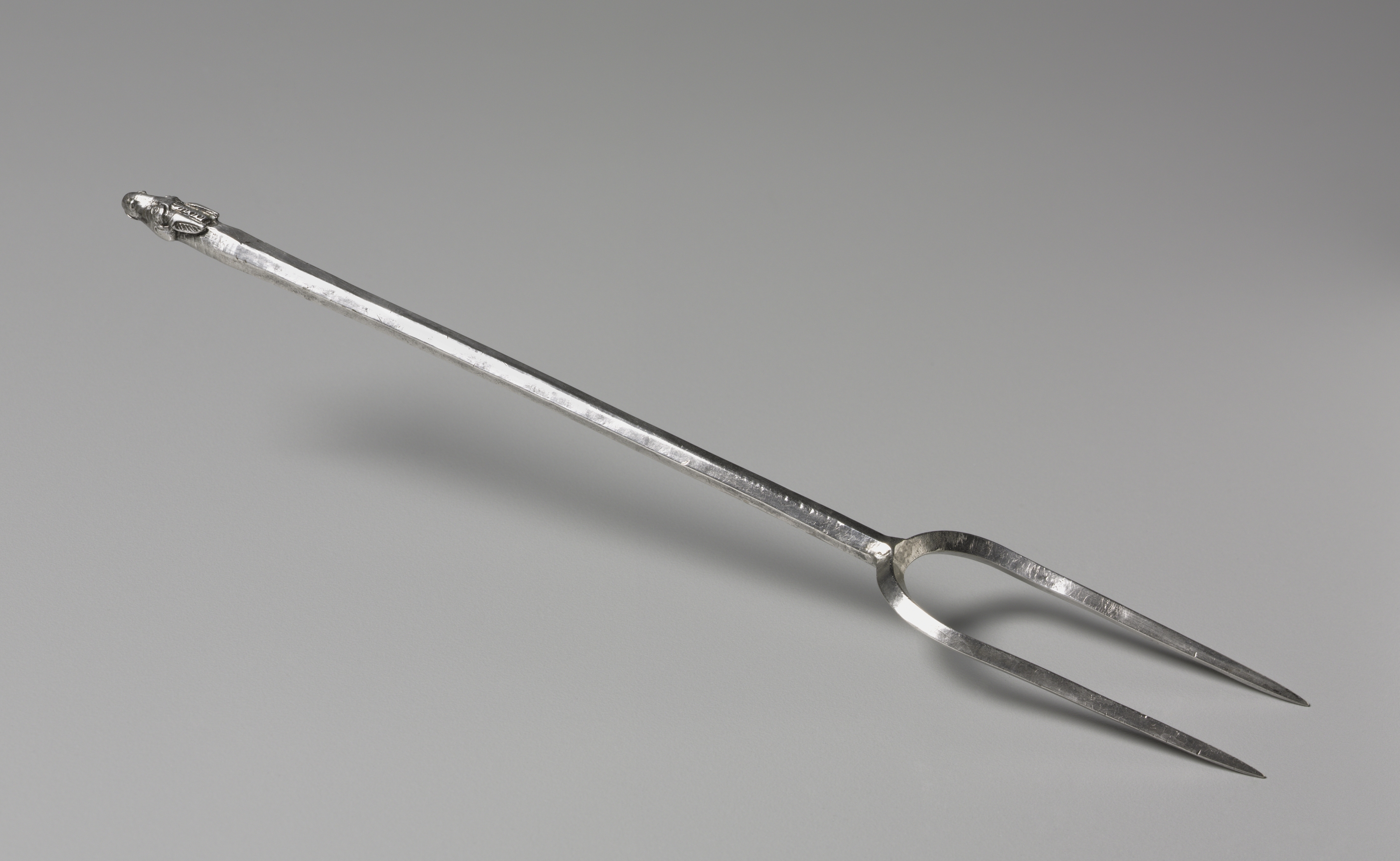The Cleveland Museum of Art
Collection Online as of April 26, 2024

Fork with Mule-Head Finial
375–425 CE
Overall: 0.5 x 20.4 cm (3/16 x 8 1/16 in.)
Location: 103 Roman
Did You Know?
This fork served a utilitarian purpose as flatware in antiquity.Description
This two-tined silver fork has a faceted handle that terminates in a mule head, perhaps a nod to its use for meat— whether cooking, serving, or eating. Forks from the premodern Mediterranean are rare, only known through a small number of surviving examples. Extant forks are relatively large and often bronze, making this silver example still more rare.- Michael Ward-1987Mr. and Mrs. Quentin Alexander, Chagrin Falls, OH, gifted to the Cleveland Museum of Art1987-The Cleveland Museum of Art, Cleveland, OH
- Turner, Evan H. “The Year in Review for 1987.” The Bulletin of the Cleveland Museum of Art 75, no. 2 (1988): 65, no. 7. www.jstor.orgParani, Maria G. Byzantine cutlery: an overview. Athēnai: Christianikē Archaiologikē Hetaireia, 2010. Reproduced: P. 149, fig. 8
- From Hand to Mouth: A History of Flatware. The Cleveland Museum of Art, Cleveland OH (October 18, 1994-March 26, 1995)The Year in Review for 1987. The Cleveland Museum of Art, Cleveland, OH (organizer) (February 24-April 17, 1988).
- {{cite web|title=Fork with Mule-Head Finial|url=false|author=|year=375–425 CE|access-date=26 April 2024|publisher=Cleveland Museum of Art}}
Source URL:
https://www.clevelandart.org/art/1987.210